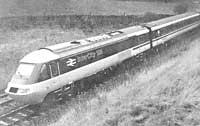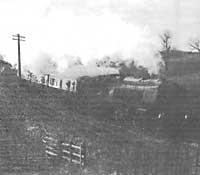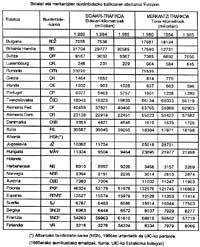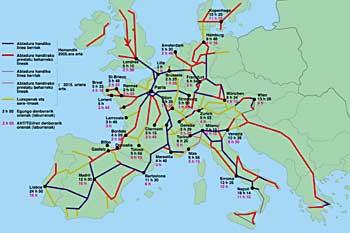European rail traffic continues to grow
1987/02/01 Sarriegi Eskisabel, Andoni Iturria: Elhuyar aldizkaria

The journal Revue Générale des Chemins de Fer, in its September 1986 issue, reveals that the UIC (Union International des Chemins de Fer) has statistical data on traffic volumes from the European railway networks of 1985 (although Bulgaria (BDZ), Romania (CFR), Greece (YUGOSLAVIA) and its results in absence.
If we analyze the evolution of freight transport by rail in the member states of the European Economic Union, it is observed that in 1985 it has suffered an increase of 3100 million tons-km in all traffic compared to 1984, with an approximate growth of 2%.

Leaving aside the post-thuelga boom in traffic in Britain (BR), on the occasion of the coal miners strike, Federal Germany (DB) presents the largest mark in tons-km with a growth of 6.8%.
International traffic is, moreover, the winner of the most outstanding favorable evolution in 1984 and 1985. In this sector, the growth in tons-km is 11.6% in the Federal Republic of Germany (BD), 8.7% in Denmark (DSB), 7.5% in the Netherlands (NS), 7.2% in Belgium (SNCB) and 17% in Luxembourg (CFL). The French SNCF shows an unfavorable trend.
For its part, the volume of traffic of goods or goods in the networks of Iparralde has improved in 1985 by 3.4%. In Switzerland (CFF) and Austria (ÖBB) an increase of 2.3% and 5.8% is expected respectively.

In Eastern Europe, however, only the German Democratic Republic (DR) has increased its traffic volume per tons-km by 3.9%.
As for passenger transport, according to the number of kilometers of passengers, traffic has grown in most European states. The largest increases have occurred in the Federal Republic of Germany (BD) and France (SNCF), which have increased its passenger kilometres by 2645 million and 1647 million respectively. The growth rate, therefore, passes 0.6% from Italy (FS), 5.4% from Portugal (CP), the Federal Republic of Germany (RD) with 7% and reaches 13.8% from Ireland (CIE).
This volume of traffic is also in line with the growth of 2.7% in Czechoslovakia (CSD), although the rest of Eastern European states have been declining, between 2% and 2.3% of the German Democratic Republic (DR). (See chart).

Gai honi buruzko eduki gehiago
Elhuyarrek garatutako teknologia






